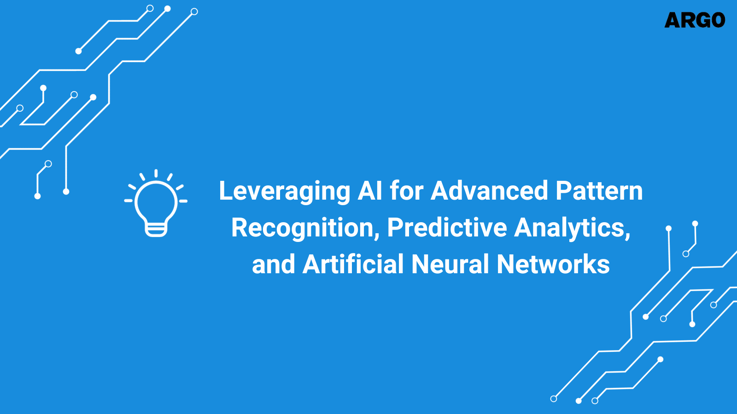Leveraging AI for Advanced Pattern Recognition, Predictive Analytics, and Artificial Neural Networks

Artificial Intelligence (AI) encompasses a variety of capabilities. Financial institutions (FIs) leveraging AI-based innovation, combined with extensive digitization capabilities, software can analyze larger data populations at a more granular level, enabling faster and more cost-effective analytical processing.
AI capabilities driving effective business process automation for FIs include:
Pattern Recognition: AI recognizes patterns using a process called machine learning; sorts them into distinct categories; and classifies outcomes such as positive/negative, high/low risk, contentment/dissatisfaction, superior/improved/less favorable scenarios, and more. Solutions incorporate these pattern classifications in the creation of automated decision-making capabilities, resulting in value generation through a synergy of pattern recognition, pattern segmentation, probability calculation, automated decision-making, and workflow processes.
Predictive Analytics: Predictive analytics applies techniques developed in the field of computer science, including computational statistics, mathematical optimization, and biologically inspired computing. These techniques make predictions and decisions automatically in areas where conventional algorithms fail to perform or are unfeasible to implement efficiently. These areas include pattern recognition and information retrieval across massive datasets (also known as "big data" or "data mining"), computer vision, timeseries forecasting, and statistical learning.
Artificial Neural Networks (ANN): Highly interconnected processing algorithms dynamically exchange numerically weighted data based on biologically inspired modeling that mimics the human brain, used for image analysis, image recognition, and natural language processing. ANNs can be trained on large volumes of data to recognize patterns, make predictions, and solve complex tasks. Fraud detection solutions use ANNs to extract and analyze handwriting, fonts, and signatures; to clean and analyze check images; and to convert written text into machine-readable form. Once interpreted, this data may be scored, classified, and used in auto-decisioning.
Bringing new AI-enhanced tools into business applications involves adding smart learning features (like supervised learning methods), enabling increased sensitivity to data patterns, which results in higher accuracy outcomes. Higher sensitivity and granularity offer advantages over traditional rule-based systems, including improved accuracy, earlier issue detection, enhanced data classification and utilization, deeper insights, and refined outcome quantification. These upgraded methods also allow the system to accurately judge the quality of business outcomes, such as determining if they are good or bad, high, or low risk; acceptable or unacceptable; and whether the system is fully optimized.
For more information, download the Using Analytical Software to Create Better Business Outcomes white paper.

